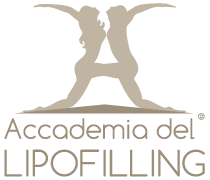Introduction
The painful neuromas after amputation is a possible complication of an ordinary skin wound where the peripheral nerve is injured; other causes include chronic irritation from pressure, nerve injury during surgery, strains or blunt trauma.
Neuromas are constituted by the aberrant growth of nervous tissue (Schwann cells and nerve fibers) that develop at the end of the proximal stumps of nerve amputation. Usually they have the shape of a nodule at the termination of the proximal stump, and typically develop after 6-10 weeks after the traumatic event, associated with a clinical manifestation that begins after 1-12 months from the trauma.
From a clinical point of view the amputation neuromas occur with a strong local pain, in the injury, which manifests itself in the form of dysesthesia “in shock” rather than burning sensation. Furthermore, the presence of a scar in place of pain and altered sensitivity in the innervation territory of the damaged nerve constitute the hinge signs-symptoms for the diagnosis of neuroma of amputation.
The pain can be spontaneous or triggered by external factors such as a mild local pressure or temperature changes.
Despite the neuromas have been described for the first time in 1811 by Odier [i], to date, different medical attempts to prevent their development have proven ineffective. Regard the treatment, numerous pharmacological and surgical techniques have been proposed, ranging from treatment with steroids, alcoholization, cauterization to nerve repair or covering with inert materials, replacement of the proximal stump within muscles or bones. The results are highly variable, and the percentages of efficacy unfortunately is not optimal. Only the resection of the neuroma often results in a temporary reduction of pain but relapses are frequent. [Ii]
The PFG technique: Perineural Fat Grafting.
For 5 years at the Unit of Plastic Surgery, directed by Prof. Luca Vaienti, at I.R.C.C.S. (Scientific Research and Health Care Institutes) San Donato Milanese Hospital, there is a new surgical technique to treat these difficult damages of nerve. The technique is summarized in acronym “PFG”, “Perineual Fat Grafting”[iii]. This method, in fact, is based on a classical neuroma resection followed by the creation of adipose “bag” created “ad hoc” to contain the proximal stump of nerve; the autologous adipose tissue ( from the same patient) used is usually collected from the abdominal region and, once treated and purified according to the technique of Colemann, is grafted around the proximal stump of nerve avoiding the intascamento in muscles or bones. The surgery, performed under general anesthesia, is normally 60-90 minutes long.
The grafted fat, as demonstrated by several of our clinical studies published in international journals, has so positive effects, related both to mechanical and biological reasons: the first because the adipose tissue transplanted forms a muffled barrier that protect the nerve and let its horizontal scrolling while avoiding traction effects and stretching; the seconds are related to the well-known properties of autologous adipose tissue, able to induce neovascularization phenomena, modulation of the inflammatory response and reduction of scar adhesion phenomena [iv].
Through a retrospective study conducted at our department, we have seen, through the PFG technique, an average pain reduction of 23% and an increase of limb function by 18% [v].
Therefore, within the baggage of medical and surgical strategies for the treatment of painful neuromas, the PFG is a useful option, particularly in case of painful syndromes of neuromas terminals or in that cases where the nerve reconstruction is contraindicated.
Autors: L. Vaienti, R. Gazzola, A. Marchesi
Bibliografy:
[i] Provost N, Bonaldi VM, Sarazin L, Cho KH, Chhem RK. Amputation stump neuroma: ultrasound features. J Clin Ultrasound 1997;25:85-9.
[ii] Thomas AJ, Bull MJ, Howard AC, Saleh M. Peri operative ultrasound guided needle localisation of amputa. Injury 1999;30:689-91.
[iii] Vaienti L, Merle M, Villani F, Gazzola R. Fat grafting according to Coleman for the treatment of radial nerve neuromas. Plast Reconstr Surg. 2010;126(2):676-8.
[iv] Vaienti L, Merle M, Battiston B, Villani F, Gazzola R.Perineural fat grafting in the treatment of painful end-neuromas of the upper limb: a pilot study. J Hand Surg Eur. 2013;38(1):36-42.
[v] Vaienti L, Gazzola R, Villani F, Parodi PC. Perineural fat grafting in the treatment of painful neuromas. Tech Hand Up Extrem Surg. 2012;16(1):52-5.
